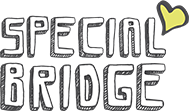Up to 90% of communication is nonverbal. For people who struggle with reading social cues, this can be scary. How can you communicate with people if you have a hard time understanding nonverbal communication?
Many people are able to understand subtle social cues naturally, but if you can’t, that doesn’t mean that you have to be left out of social situations. We’re here with a brief guide that can help you start to understand how to read social cues.
Read on to learn more.
What Are Social Cues Anyway?
Social cues are part of how people communicate (either with or without words). Sometimes social cues accompany more traditional verbal communication, and other times, they replace verbal communication altogether.
You can receive social cues from anyone. Whether it’s someone sitting across the room who’s “making eyes” at you or someone who’s sitting right next to you who’s displaying annoyance (or anywhere in between).
Social cues can be difficult for some neurodivergent people. While most people pick up social cues naturally while learning basic social skills, this is more challenging for people with conditions such as autism.
There are no strict “rules” regarding social cues, and they’re largely context-dependent. This makes them more difficult to teach and more difficult to learn.
It’s helpful for neurodivergent people to engage in social situations as often as possible, and perhaps even get a social coach to help. This way, they can learn all about what is and isn’t appropriate in a variety of social situations and begin to understand the complexities of subtle (or not-so-subtle) social cues.
Social cues can be more important than what people are actually saying when it comes to interpreting social situations.
Body Language
Body language is a large part of social cues. Understanding body language requires paying close attention to the people around you, but not so close that people think that you’re staring. This is a challenging thing to balance.
So what are a few basic body language cues that you should be able to understand at a glance?
Proximity
Proximity is a big one, and it’s something that many (especially younger) neurodivergent people struggle with. Being too close or too far away from another person is common, especially if you struggle with sensory issues.
For people that you don’t know well, like coworkers or acquaintances (if you’re not in a crowded setting where people are close together by default), staying between 4 and 12 feet apart is customary. If you’re speaking, you’ll be closer.
For close friends, being between 1.5 and 4 feet apart is customary. For close family members, partners, and best friends, any degree of closeness is appropriate, as long as both people are comfortable with it.
Pay attention to if someone is trying to move closer to you or distance themself from you. This gives you an idea of the emotional closeness that they’re feeling.
Mirroring
Mirroring can be either conscious or unconscious. It means that one person is mimicking the other (though not in an effort to mock them).
Consider the phenomenon of a contagious yawn. Yawns aren’t really contagious. When one yawn sets off a string of yawns around the room, it’s because the other people are unconsciously mimicking the first one.
Mirroring body language is common during dates and even job interviews when people want to display similarities.
Gesturing
Some people use more hand gestures than others. “Talking with your hands” is quite common in some cultures, and even subtle gestures can be informative.
If someone hides or fidgets with their hands while talking, it’s a sign that they’re uncomfortable. This isn’t a sign of dishonesty, but it is a sign that the person isn’t at ease.
Upward-facing or exposed hands signal comfort or transparency.
Some people use emphatic hand gestures while telling stories. In this case, try to understand their hands as puppets or storytelling tools rather than signals.
Posture
The way that someone positions themself (both in general and in relation to the people around them) can tell you a lot.
Someone who has a closed posture is signaling that they are not happy or open to conversation. A closed posture means that their arms may be crossed, their legs could be crossed (away from you), they’re looking down, and they may even turn away.
Someone with an open posture looks relaxed with their arms at their sides. This is more inviting.
Someone who leans into a conversation is showing interest and vulnerability. If they’re leaning away, it may signal disinterest or aloofness.
Vocal Cues
Vocal cues go beyond what people are saying. Rather, vocal cues are all about how people are saying these things.
Speaking in a monotone way can, in some cases, be a sign that someone is disinterested. That said, monotone speaking can also be a sign of neurodivergence. If you tend to speak in this way, make an effort to add more inflection to your voice so you don’t confuse others.
Quiet speaking is a sign of nervousness, while loudness is a sign of enthusiasm (either positive or negative).
You can also pay attention to where people place emphasis when they’re speaking. If one word stands out due to the tone that the person is using when they’re saying it, that word is probably important.
Facial Expressions
Eyes and mouths are the clearest windows to what people are thinking.
If someone has lifted eyebrows and wide eyes, it can signify surprise or interest. Furrowed brows indicate concern or confusion. Even if someone isn’t smiling with their mouth, small wrinkles around the corner of their eyes can show happiness.
While smiles tend to mean happiness, tense smiles can indicate annoyance or even sarcasm.
Someone with a neutral mouth may seem upset, but they may just be relaxed. Remember that the lack of a smile doesn’t indicate a bad emotion.
Reading Social Cues Is Challenging
Either with or without neurodiversity, reading social cues can be tough. This is only a brief guide, but hopefully, it can put you on the right track toward understanding confusing social cues so you can make new friends and interact with greater ease.
Are you looking for new friends (or even partners)? Try Special Bridge! You can connect with other people like you.
Set up an account today to start meeting people.




2 comments:
alnava88
August 16, 2022 at 3:20 pm
I been social in special bridge and been making friends and text them and I always on special bridge and reading and social disabilities and learning disabilities
maddyoneil
August 20, 2022 at 7:32 pm
I have learning disabilities, can be hard understanding some social cues. I’m a very verbal learner but I have trouble picking up signals.